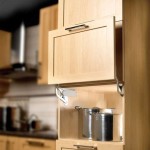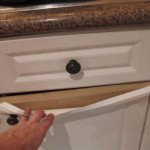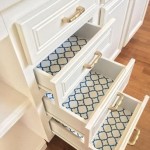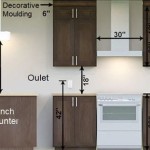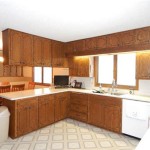Kitchen Cabinet Door Widths: Essential Aspects
The width of kitchen cabinet doors plays a crucial role in determining the overall look, functionality, and storage capacity of your kitchen. Whether you're designing a brand-new kitchen or renovating an existing one, understanding the essential aspects of door widths is paramount for creating a cohesive and practical space.
## Determining the Right WidthThe optimal width for kitchen cabinet doors depends on several factors, including the overall size of the cabinet, the intended use of the cabinet, and the available space in the kitchen. Here are some general guidelines to consider:
*Base Cabinets:
Base cabinets are typically wider than upper cabinets, with door widths ranging from 12 to 18 inches. The most common sizes are 15 inches for single doors and 30 inches for double doors. *Upper Cabinets:
Upper cabinets are narrower than base cabinets, with door widths typically ranging from 12 to 15 inches. Smaller door widths help to minimize the appearance of clutter and maintain a clean, streamlined aesthetic. *Specialty Cabinets:
Specialty cabinets, such as corner cabinets, pull-out drawers, and pantry cabinets, may have non-standard door widths to accommodate their unique designs and functions. ## Functionality and AccessibilityThe width of cabinet doors also impacts functionality and accessibility. Wider doors offer easier access to the interior of the cabinet, but they may require more clearance space when opening. Conversely, narrower doors take up less space but may be more difficult to reach into for items stored in the back.
## Aesthetics and StyleThe width of cabinet doors can influence the overall appearance and style of your kitchen. Wider doors tend to create a more contemporary and sleek look, while narrower doors evoke a more traditional or rustic aesthetic. Consider the overall theme and design of your kitchen when selecting cabinet door widths.
## Hardware and MountingsThe width of the cabinet doors also affects the type and placement of hardware. Wider doors may require longer handles or pulls, while narrower doors can accommodate smaller hardware without looking cluttered. The mounting location of the hardware (e.g., center vs. off-center) should also be considered in relation to door width.
## ConclusionBy carefully considering the essential aspects of kitchen cabinet door widths, you can ensure a kitchen design that meets your functional, aesthetic, and storage needs. From determining the right width to selecting suitable hardware and mountings, each aspect plays a vital role in creating a cohesive and practical space that enhances your cooking and entertaining experiences.

N Standard Kitchen Dimensions Renomart

Kitchen Unit Door Combinations

Cabinet Face Dimensions

Refacing Kitchen Cabinets Measuring New Cabinet Doors Dimensions Wall

Kitchen Cabinet Refacing Door Depot

Kitchen Unit Door Combinations

Barker Door Cabinet Doors And Drawer Boxes

N Standard Kitchen Dimensions Renomart

Door Dimensions And Hinge Requirements Kitchen Cabinets Hinges Cabinet Doors

Abcs Of Kitchen Cabinets And Specifications Granite Quartz Countertops Factory
Related Posts

